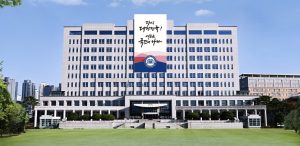A shocking incident occurred in South Korea on October 24 when suspected propaganda materials from North Korean “trash balloons” landed at the Presidential Office in Yongsan, Seoul, during preparations for the official welcoming ceremony of Polish President Andrzej Duda’s state visit. Although only about 20 items were scattered, the fact that several balloons reached the vicinity of the presidential office has raised concerns about North Korea’s increasingly sophisticated and dangerous balloon operations.
While the South Korean military hasn’t ruled out coincidence, the discovery of GPS transmitters in some balloons suggests these launches might be intentionally targeted. What exactly is North Korea trying to achieve?
According to a Daily NK source inside North Korea, the Kim Jong Un regime has been conducting these balloon launches since mid-September 2024 under the guise of “enemy attack drills.” This training encompasses psychological warfare, covert operations, and propaganda aimed at creating confusion and lowering morale in South Korea. Specifically, frontline units under the Second Corps (in Pyongsan County, North Hwanghae Province) are calculating coordinates, wind speeds, and adjusting launch points to target specific areas in South Korea.
Notably, these balloon operations are authorized directly by Kim Jong Un based on proposals from lower-level military units. This suggests the psychological warfare campaign will likely continue as part of the supreme leader’s strategic approach toward South Korea.
Why has North Korea suddenly shifted to this form of enemy operations training? The previous justification of responding to South Korean leaflets no longer holds, and Kim Yo Jong’s argument about “South Korean citizens’ right to know” has collapsed. According to a Daily NK investigation, this strategy was discussed and decided by the Central Military Commission and the State Affairs Commission leadership, indicating a new, more aggressive phase in psychological operations against South Korea.
The North Korean authorities appear to be testing South Korea’s and its military’s responses while gathering data on balloon operations. Rather than focusing on quantity, North Korea is now prioritizing accuracy in hitting specific targets within an acceptable margin of error, while carefully documenting South Korea’s reactions.
The recent presidential office incident demonstrated Pyongyang’s focus on targets with military and political significance, including Yongsan and military facilities. The concentration of balloon landings in Seoul and the capital region is deliberate, targeting South Korea’s political and economic center where population density is highest for maximum psychological impact.
While many balloons are equipped with time bombs, sources indicate the current goal isn’t actual detonation but rather creating psychological pressure and fear. However, the possibility of actual detonation hasn’t been ruled out, and biological or chemical weapons remain potential options in their “enemy operations” arsenal.
The launch of balloons destined for sensitive areas in Seoul could be seen as retaliation for North Korea’s claim of repeated incursions by South Korean drones over Pyongyang, including near the headquarters of the Workers’ Party of Korea. Importantly, however, North Korean authorities are not informing their own citizens about these balloon operations. This suggests the campaign is not meant to demonstrate a strong response to the alleged drone incident.
Instead, the balloons are strictly aimed at South Korea, intended to instill fear and create internal division while discouraging information flow into North Korea. This sensitivity to external information is also evident in North Korea’s strong reactions to South Korea’s loudspeaker broadcasts, which they view as a significant threat to regime stability.
Some North Korean citizens have expressed skepticism about these tactics. “Sending trash balloons in this modern age only degrades our dignity. The new generation should find better ways to express our voices,” one resident in their 20s from North Pyongan Province told Daily NK recently, “Instead of promoting conflict, we should seek ways to coexist peacefully, even if we can’t cooperate. While I’m not fully aware of the current situation, sending trash balloons is just embarrassing for our country.”
The North Korean authorities remain sensitive to changing public perceptions and adjust their policies accordingly. Recent moves to distance the regime from concepts of Korean unification, including referring to South Korea as “puppet Korea” and removing South Korea from peninsula maps, have prompted questions from citizens. The authorities have responded by attempting to suppress such discussions and ordering strict reporting of any “reactionary phenomena.”
The regime might resort to organizing large-scale anti-South demonstrations if major incidents occur, using them as opportunities for propaganda and ideological mobilization. The success of this confrontation may ultimately depend on reaching North Korean citizens with the truth and winning their hearts and minds.

































